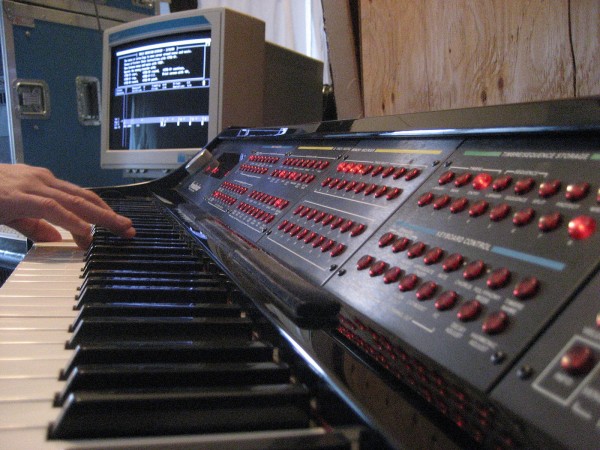Review: The Synclavier V

It isn’t very often that a single instrument will affect an entire generation of musician/composers, but the original Synclavier digital synthesizer found admirers ranging from Neil Young to Frank Zappa, and became a staple tool for film composers and sound designers - or at least the ones who could afford it. For the cost of a house (or two), the Synclavier system was a digital synthesis powerhouse, featuring innovative implementations of FM, additive synthesis, modulation sequencing, performance sequencing and (later) sampling.
As with many systems from the late 70’s and early 80’s, plummeting hardware costs led to the eventual cratering of the company; by the mid 80’s, New England Digital Corporation (the developers of the Synclavier) were no more. However, throughout the years, a dedicated group of users have kept the Synclavier flame alive, trading hardware, searching out repair parts and providing support for each other. But it seemed like a dying platform…
Imagine my surprise when, at last year’s NAMM show, I saw a number of people I know sporting Synclavier shirts. What the heck? It turns out that Cameron W. Jones (aka Synclavier Digital) teamed up with Arturia to create an updated version of the Synclavier as a software instrument, and it became a featured synth in the “V Collection” of Arturia’s softsynth collection. Since I could never afford a Synclavier - or, for that matter, a house - in the 80’s, I had to try this thing out!
If anything, it was better than my hope (and experience) could have led me to believe. I’d spent some time with Synclaviers in the subsequent years, mainly because I’d make friends with anyone that would let me in their studios to play with the devices. I was always amazed but confounded with some of the user interface choices, but inevitably came up with results that were unexpected.

The interface available with the Synclavier turns the tables on this sort of interaction. The pseudo-keyboard interface is similar to that found on the original hardware’s keyboard, but the synthesis engine implemented through the ‘Screen’ interface is one of the most intuitive ways to develop time-phased and/or -sequenced FM and additive synth patches I’ve ever worked with. The combination of envelopes, overlays, keyframing and modulation routing could overwhelm (especially since there are 12 different layers/partials to work upon), but the interface is crystal-clear, with time-saving conveniences at every turn.
While I could go through the whole process of describing the programming technique, it is probably easier to point to these videos to get a sense of the possibilities:
Setting up a simple generative sequencing patch in combination with the Synclavier V’s editing screen quickly proceeded to waste an entire afternoon on me. It didn’t take much work - and only a single viewing of the above tutorials - to put me in FM and additive heaven.

While I could spend the time to make an FM-ing, sequencing, additive polysynth, I’d much rather spend my time coming up with interesting sequencing options, quirky effects and fun loopers to create a better performance system for my work. And therein lies the beauty of the Synclavier V: not only does it represent a great implementation of a classic instrument, but it also provides an open playground for an entire class of synthesis that frees me to focus on the areas of work I really care about.
And sound great doing it!
by Darwin Grosse on July 5, 2016

